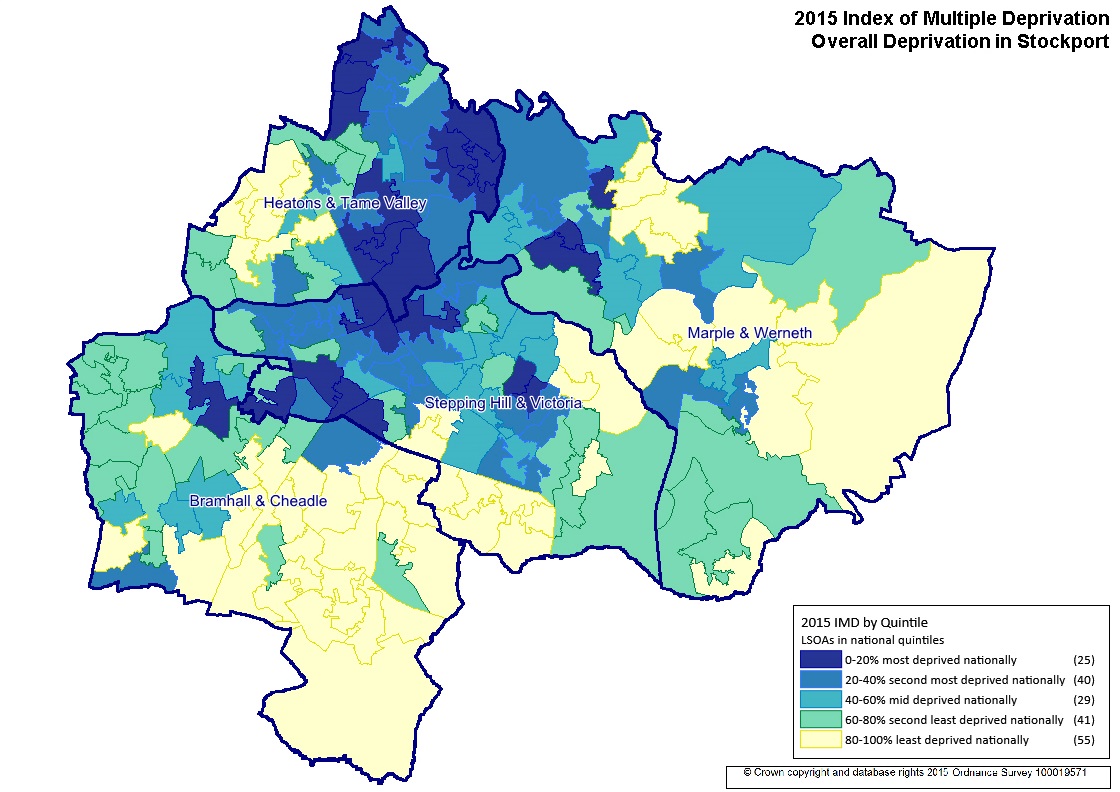Key fact
Stockport has areas of severe deprivation with 14% of the population living in the most deprived areas. However the deprivation is not particularly widespread and 28% live in the least deprived areas making Stockport notably polarised.
%
40,200 people live in the most deprived area Mortality is 1.50 times the Stockport average.
%
60,511 people live in the 2nd most deprived area Mortality is 1.20 times the Stockport average.
%
43,363 people live in the mid deprived area Mortality is 1.06 times the Stockport average.
%
62,561 people live in the 2nd least deprived area Mortality is 0.90 times the Stockport average.
%
80,106 people live in the least deprived area Mortality is 0.76 times the Stockport average.
Key information
- The Index of Multiple Deprivation (IMD) 2015 shows that 14% of the Stockport population live in the 20% most deprived areas nationally.
- Brinnington and Lancashire Hill are the most deprived areas in the borough, ranking within the 2% most deprived nationally.
- There are an estimated 30,000 low income households in Stockport and an estimated 36,400 people living in poverty.
- Educational attainment shows a deprivation gap; by age 16 25% of children in Brinnington & Central achieve 5 A*-C GCSEs
- For children who are eligible for Free School Meals the performance gap rises from 26 percentage points at foundation stage to 41 percentage points by key stage 4
- Stockport has a good range of greenspace and leisure assets.
Key issues for commissioners
- Those in the more deprived areas have worse health and fewer life chances than those in the least deprived.
- People in the most deprived areas die younger, attend hospital more frequently and have more long term conditions compared with those living in the less deprived areas.
- Narrowing inequalities is a key priority so that the outcomes in deprived communities are improved and healthy life expectancy is increased.
- A particular focus is needed in early years, as children in our most deprived areas are not necessarily given the best possible start for a healthy life, and educational outcomes show that gaps widen as children age.

